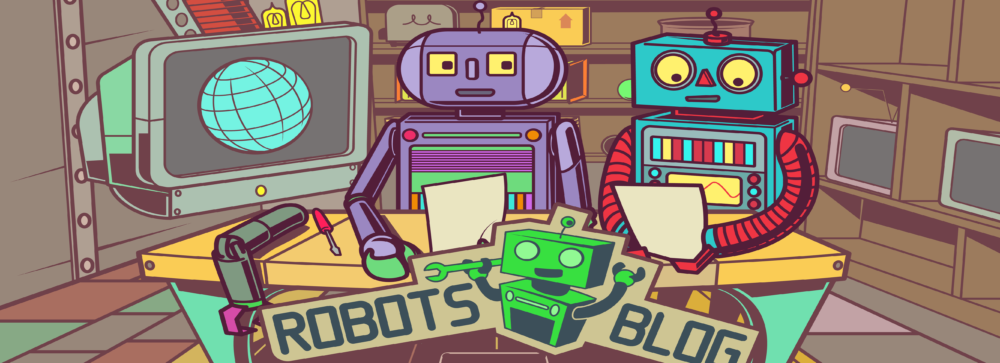Auf dem Roberta-Portal steht eine überarbeitete Version des NXC Tutorials zum Download bereit.
U.a. wurden folgende Themen ergänzt:
- Arrays (Felder)
- Gleitkommazahlen
- mehr…
Der Download findet sich hier

Auf dem Roberta-Portal steht eine überarbeitete Version des NXC Tutorials zum Download bereit.
U.a. wurden folgende Themen ergänzt:
Der Download findet sich hier
A new version of the German NXC Tutorial is available at the Roberta-Portal.
It now includes:
Download is available here
There is a free download available at the Roberta Portal, including a comparison of the Programming Languages:
***updated Version now available***
Auf dem Roberta Portal findet sich seit kurzem ein Vergleich mehrerer Programmiersprachen für die Lego Mindstorms Produkte. Der Download ist kostenlos und beinhaltet u.a. Informationen über folgende Sprachen:
+++überarbeitete Version nun verfügbar+++
There is a new version (1.5) of the german NXC Tutorial available at the Roberta website.
Now with support for the motor-rotation counter and the NXT 2.0 color-sensor.
Currently I’m participating at the workshop of Safety, Security and Rescue Robots 2010 in Bremen.
The first day is now gone and a lot of interesting talks have been given:
Tetsuya Kinugasa has shown a Flexible Displacement Sensor in his talk of „Measurement of Flexed Posture for Mono-tread Mobile Track Using New Flexible Displacement Sensor„. His group develops and uses this sensor to control the posture of a robot which is a combination of snake, worm and tank.
Jimmy Tran presented his works on „Canine Assisted Robot Deployment for Urban Search and Rescue„. The basic idea is as simple as brilliant, use a equipped dog to find victims and to inform operators about him. So, dogs are well used in rescue and they have a high mobility. They can easily overcome huge rubles and are able to carry video cameras or rescue material. So, his approach is to use the dogs to deploy a small robot next to a victim, which would allow to investigate medical status of the person. The idea is hilarious.
„Development of leg-track hybrid locomotion to traverse loose slopes and irregular terrain“ is so far the most interesting technical approach of this workshop. It shows a way how a tracked like vehicle can be combined with a semi-Walker.
Donny Kurnia Sutantyo presented his work on „Multi-Robot Searching Algorithm Using Levy Flight and Artificial Potential Field„, while Julian de Hoog showed a solution for team exploration in „Dynamic Team Hierarchies in Communication-Limited Multi-Robot Exploration“.
The invited speaker Bernardo Wagner showed the outcomes of his department. The Leibniz University of Hannover has worked intensively in the field of „Perception and Navigation with 3D Laser Range Data in Challenging Environments„.
„Potential Field based Approach for Coordinate Exploration with a Multi-Robot Team“ is topic of Alessandro Renzaglia.
Bin Li showed another nice approach of a shape shifting robot. His robot is able to shape shift it self by rearranging its three motion segments. „Cooperative Reconfiguration between Two Specific Configurations for A Shape-shifting Robot“
Jorge Bruno Silva presented a approach of trajectory planing while respecting time constrains in „Generating Trajectories With Temporal Constraints for an Autonomous Robot“
Noritaka Sato closed the day by presenting novel a HMI approach for teleoperation. Instead of showing only the direct camera image his group uses temporal shifted images to generate an artificial bird eye view, like it is given in computer car games. „Teleoperation System Using Past Image Records Considering Moving Objects“
I am looking forward to listen to the next talks.
New Roberta-Experiment „Braitenberg Vehicle“ is now online and free downloadable for registered Roberta-Teachers http://www.roberta-home.de/de/aktuelles/neues-roberta-material
The program code for the balancing Roberta robot „Philippe Petit“ is now available for download at the Roberta-Homepage. The download is available for all Roberta Teachers at the internal download section. Videos are available at the Roberta Youtube-Channel.

Not eXactly C is a high-level programming language for the Lego Mindstorms NXT. NXC, which is short for Not eXactly C, is based on Next Byte Codes, an assembly language. NXC has a syntax like C.
There is a new version of the NXC Tutorial available at the Roberta Homepage. It is an extended german version of the tutorial original based on the work of Daniele Benedettelli.
You can download the german tutorial for free here: http://roberta-home.de/de/was-bietet-roberta/roberta-reihe/nxc-tutorial
The English original version is available here: http://bricxcc.sourceforge.net/nbc/nxcdoc/NXC_tutorial.pdf